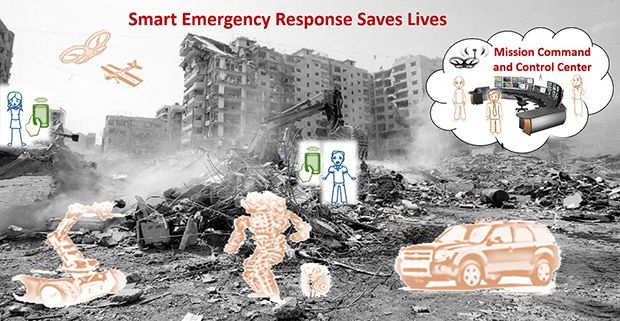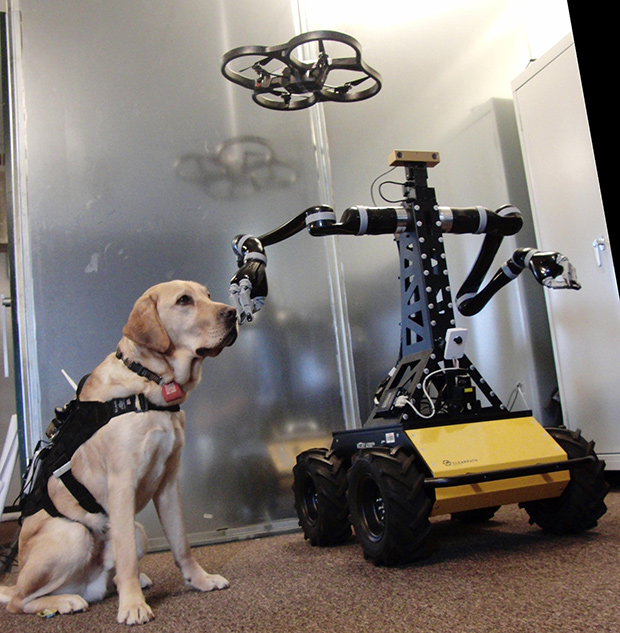No matter how much time and energy and money we put into a robot, it’s going to be a very very very long time before we come up with anything that’s anywhere close to as capable as a dog. From a robotics perspective, dogs are utterly amazing: they’re fast, efficient, able to cover all sorts of terrain, can understand both verbal and gestural commands, and they run on dog food.
Dogs do have some limitations: they can’t move rubble, and they’re not that great at flying, either. Robots can do these things, but in a disaster scenario, the key is getting all these different pieces (robots, dogs, humans, and anything else) to work together in a coherent way.
The Smart Emergency Response System (SERS) is trying to make this work, using a combination of “ground and aerial autonomous vehicles, drones, humanoids, human-operated telerobots, and trained search-and-rescue dogs equipped with real-time sensors” to save as many lives as possible in an emergency.
The project involves a number of organizations, including North Carolina State University, MathWorks, University of Washington, MIT, BluHaptics, National Instruments, University of North Texas, Boeing, and Worcester Polytechnic Institute.

This may be one of the most charmingly terrible graphics I’ve ever seen, but I like how it shows an ATLAS with what I think might be a dog next to it, and we all know how well dogs and robots get along.
Anyway, the SERS system combines whatever kinds of communications are available (Wi-Fi, cellular, Bluetooth, etc.) to connect autonomous and semi-autonomous robots with a centralized command center.



